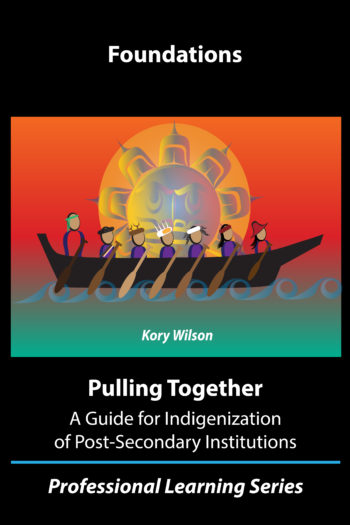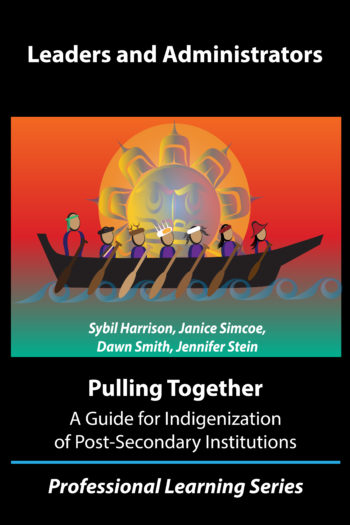
Academic curricula have primarily been developed in ways that privilege the dominant, Euro-Western culture through the content, approaches to teaching and learning, and values about knowledge. The experiences, worldviews, and histories of Indigenous Peoples have been excluded in education systems, because they were seen as less valuable or relevant. Perceptions of Indigenous Peoples were often misrepresentative and perpetuated stereotypes. This exclusion and misrepresentation was one of the most damaging impacts of colonialism and one of the strongest tools of assimilation. As Linda Tuhiwai Smith (2012) writes, “Imperialism has been perpetuated through the ways in which knowledge about indigenous peoples was collected, classified and then represented in various ways back to the West, and then, through the eyes of the West, back to those who have been colonized” (p. 1).
Pulling Together: A Guide for Curriculum Developers
“Pulling Together: A Guide for Indigenization of Post-Secondary Institutions; A Professional Learning Series” is a set of professional learning guides that are a result of a collaboration between BCcampus, the Ministry of Advanced Education, Skills and Training, and a Steering Committee of Indigenous education leaders. The content in these guides is authored by teams of Indigenous and ally writers from across B.C.
These guides are available online and print copies are available to borrow from the Library.
 Pulling together: foundations by Kory Wilson
Pulling together: foundations by Kory Wilson Pulling together: a guide for leaders and administrators by Sybil Harrison, Janice Simcoe, Dawn Smith, and Jennifer Stein
Pulling together: a guide for leaders and administrators by Sybil Harrison, Janice Simcoe, Dawn Smith, and Jennifer Stein